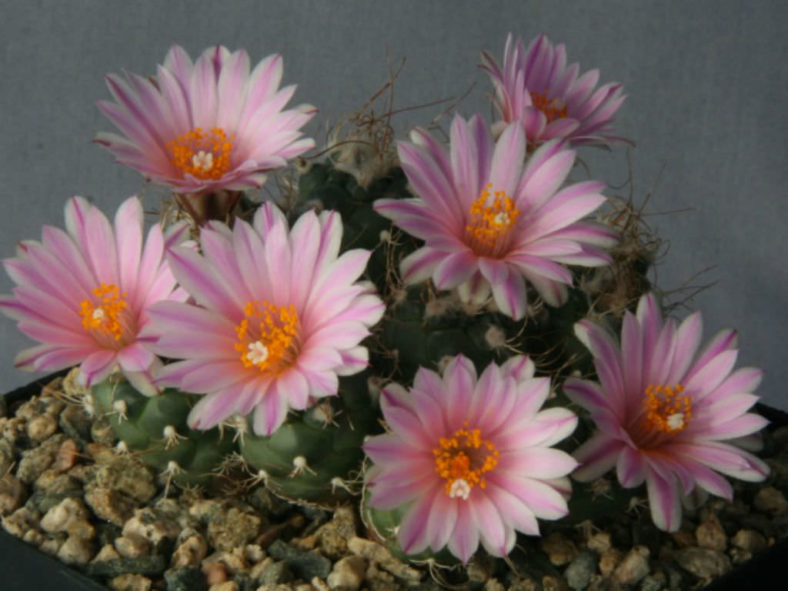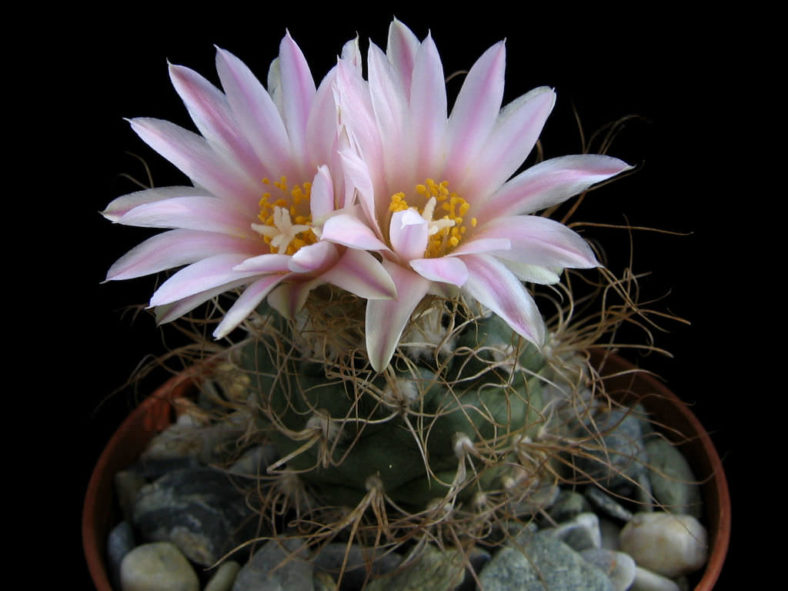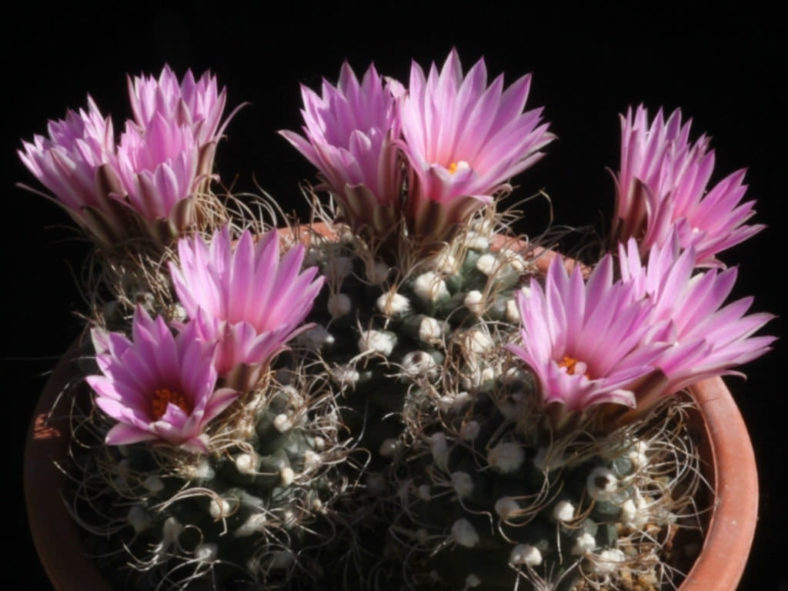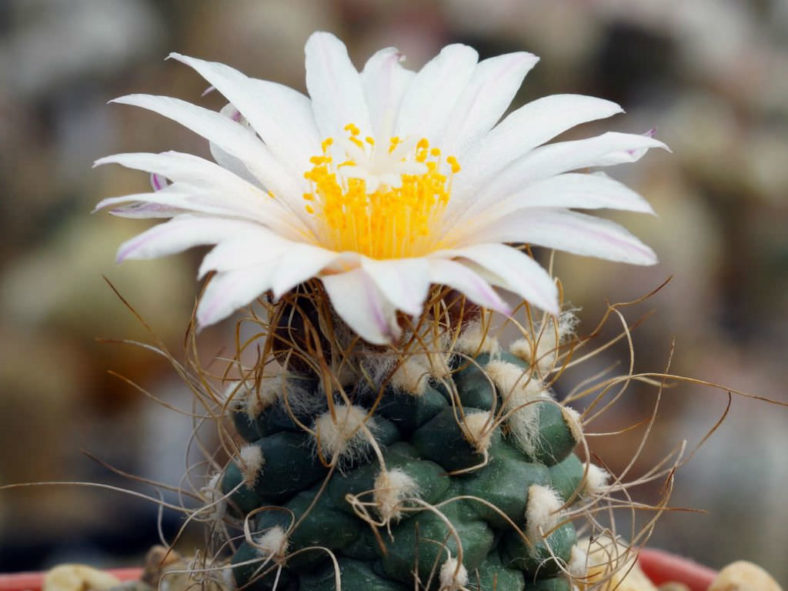Scientific Name
Turbinicarpus pseudomacrochele (Backeb.) Buxb. & Backeb.
Synonym(s)
Turbinicarpus pseudomacrochele subsp. pseudomacrochele, Strombocactus pseudomacrochele
Scientific Classification
Family: Cactaceae
Subfamily: Cactoideae
Tribe: Cacteae
Genus: Turbinicarpus
Description
Turbinicarpus pseudomacrochele is a small cactus with green globular stems covered with low conical tubercles and a woolly top. It grows solitary or slowly clumping, and stems can grow up to 1.6 inches (4 cm) in diameter. The areoles at the tips of the tubercles are white, and each bears 6 to 8 twisted white to brownish-yellow spines that can grow up to 1.2 inches (3 cm) long.
The flowers are diurnal, pale pink, yellowish-green to purple, and have a darker mid-stripe. They can reach up to 0.8 inches (2 cm) in length and 1.4 inches (3.5 cm) in diameter. The fruits are green, nearly round, and up to 0.25 inches (0.6 cm) in diameter.

Hardiness
USDA hardiness zones 9b to 11b: from 25 °F (−3.9 °C) to 50 °F (+10 °C).
How to Grow and Care
Turbinicarpus prefers a well-ventilated position in full sun to maintain good body color and spinal development. When watering, the golden rule is "never water when the soil is still damp." Overwatering is the one error that will certainly kill any plant. Watering should commence in the spring, depending on the weather conditions. The plants should initially be given a light spray to encourage them to grow gently.
These cacti can withstand high summer temperatures and benefit from good ventilation. Do not be tempted to overcrowd the plants; they will be far happier with a bit of space to allow the air to circulate. Winter temperatures can be set as low as 44 to 46 °F (7 to 8 °C). Indeed, the plants need these low temperatures to ensure a sustained dormant period, resulting in good growth and flowering the following growing season.
Learn more at How to Grow and Care for Turbinicarpus.
Origin
Turbinicarpus pseudomacrochele is native to Mexico (Hidalgo and Querétaro).
Links
- Back to genus Turbinicarpus
- Succupedia: Browse succulents by Scientific Name, Common Name, Genus, Family, USDA Hardiness Zone, Origin, or cacti by Genus
Photo Gallery


